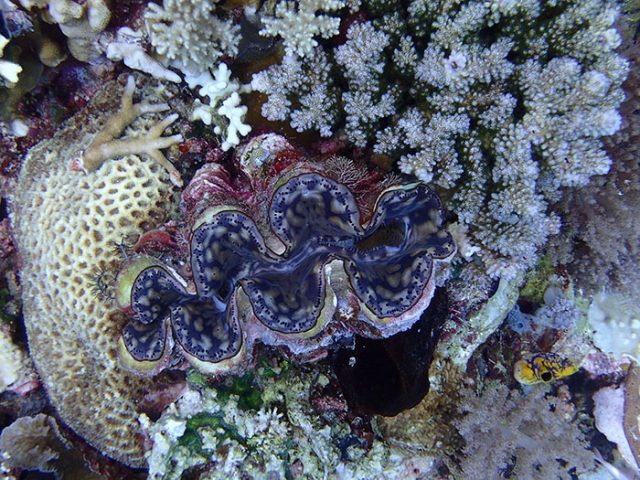
Giant clams may be big and strong, but they are also very vulnerable and in danger of becoming extinct.
Amid the rising concern for the environment caused by the closure of world-famous Boracay island, the University of the Philippines Marine Science Institute has launched a program that could help keep the oceans clean, save the threatened species, and even yield treasures.
The Bolinao Marine Laboratory of UPMSI launched on April 18 their “Adopt-a-Clam: Help Save a Little Giant” program in Silaqui Island, Pangasinan that aims to raise awareness about the importance of the world’s largest bivalve mollusk.
The giant clam (Tridacna gigas), locally known as “taklobo,” is one of twelve known giant clam species living in tropical marine waters and the BML takes care of six of these species.
“Your donations will be of great help in bringing back giant clams all over the Philippines and in protecting their homes on the reef,” the marine laboratory’s post read.
The project, which is part of an exhibit, received many responses, including those who are willing to be “foster parents” of these mollusks.
There are also those who could not travel to Pangasinan, but are still willing to donate. As of writing, only visitors who went to the event are allowed to adopt a clam.
Marine giants with big roles
According to the Endangered Species International (ESI), giant clams “fill a valuable role as filter feeders, cleaning the water of pollutants as they ingest algae or plankton.”
They can reach sizes around 1.2 meters (3.9 feet) long and weigh up to 200 kilograms (440 lbs) and it has been estimated that they can live up to 100 years.
“These charismatic bivalves are an important ecological component of coral reefs, especially as contributors to overall productivity and providers of substrate (e.g., their shells) for many life forms,” ESI said.
“Giant clams are nurseries for fish, serving as refugees for juveniles escaping predators, and the shell ridges provide privacy for adults laying eggs,” it added.
In addition, two of the largest pearls ever found came from giant clams in the Philippines. The second largest, found in 1939 in Palawan, weighed 6.4 kilograms and was dubbed as the Pearl of Allah and later as the pearl of Lao Tzu.
The current largest recorded pearl was found in 2016 in Palawan in the possession of a fisherman who has been keeping it in his home as a good luck charm for 10 years.
Reports estimated that the 34 kilogram natural pearl could be worth $100 million.
The threat of extinction
The giant clam is among the endangered creatures listed in the Convention on International Trade in Endangered Species of Wild Flora and Fauna (CITES), a global trade agreement to protect wildlife.
According to the National Geographic, poaching caused the rapid decline of these marine organisms in the past decades.
Rachael Bale wrote in article titled, “Critical Reefs Destroyed in Poachers’ Quest for World’s Biggest Clams,” that the marine bivalves are still in-demand in China, but for a different purpose.
“Giant clams are in vogue in China for carvings, jewelry, and other ornaments—as status symbols for the wealthy and as protective charms in Chinese Buddhism,” she wrote.









